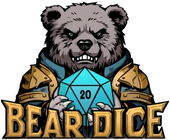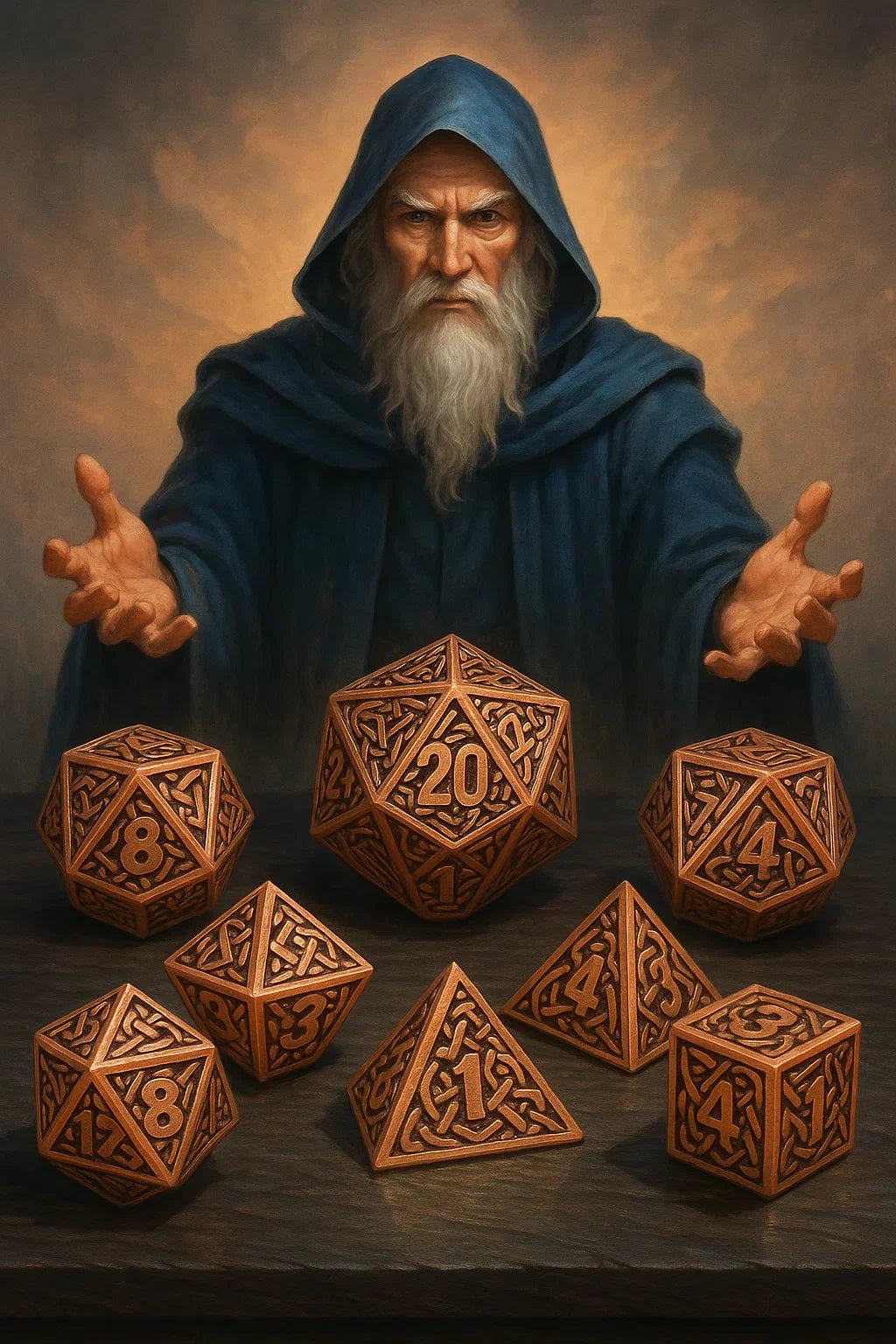As a novice dungeon master DM, you may be thinking about a question: How to make players have fun without being wiped out? The answer may be simpler than you think: use dice reasonably and design enemies and challenges well!
In this article, let's talk about how to use dice to design dungeon battles, puzzles and enemy strategies to make your adventure more exciting and fairer.
When designing enemies, dice are not just as simple as throwing damage
When we design an enemy, many DMs' first reaction is: How many HP does it have? How much attack? Throw a D20 to see if it can hit? These are of course important, but you can also start with the combination of dice to make the enemy more layered.
Use dice to set damage type and intensity:
| Enemy level Damage | Dice combination Combat | Characteristics |
|---|---|---|
| Small monsters | 1d6 or 1d8 | Warm-up battle, simple attack |
| Intermediate enemy | 2d10 + elemental damage Threatening |
Skill changes Flame shaman |
| Boss-level enemy | 3d12 + Status effect Multiple attacks |
With negative status such as poisoning/coma Underground dragon |
- For small monsters, you can use 1d6 or 1d8 to warm up the players;
- For mid-level enemies, such as small bosses, use 2d10, add some elemental damage (such as fire or freezing) to bring some threat;
- For boss-level enemies, you may want to set skill attacks to 3d12 + status effects (poisoning, coma, etc.).
👉 Suggestion: Don't just rely on "hard numbers" to crush, but let the dice mechanism reflect the characteristics of the enemy, such as "this lizardman throws two D6s each time when attacking, one represents poison and the other is physical damage."
The attack frequency can also be thrown by dice!
You can design the enemy's attack logic, such as:
- Throw a D4 every round, throw 1-2 for normal attack, 3-4 for special skills;
- Or change the attack method according to the HP stage, such as attacking once more per round when the HP is less than 50%.
Use dice to design battles and puzzles? Don't just think about fighting!
Dice are not only used for combat, they can also drive stories and puzzles.
Changes in combat: Let dice determine "terrain" and "events"
Design a lava room and throw a D6 every round:
1-2: The ground is stable;
3-4: A corner starts to catch fire;
5-6: The area where the player stands requires a DEX check (agility check), otherwise health will be lost.
In this way, even if the enemy does not change, the environment becomes interesting. Combat is no longer just "standing still and outputting", players need to use their brains to move and cooperate.
Puzzle design: dice = hint generator
You can prepare a set of puzzle templates in advance, and then use dice to determine the combination or trigger conditions of the puzzle.
For example:
1d4 determines the type of puzzle (logic/number/rhythm/pattern);
1d6 determines the trap or failure penalty (loss of HP, attracting enemies, activating the mechanism); After successfully solving the puzzle, throw a D10 to determine the reward (experience, treasure chest, NPC information).
This "semi-random + template" design not only saves you time in preparation, but also makes every adventure new.
Randomness vs. predictability: fairness is the soul of challenge
As DM, we must make the battle suspenseful, but we cannot ruin the player's experience by "bad luck" or "good luck". So how to find a balance between the randomness of the dice and the controllability of the challenge?
1. Set the "lower limit" and "upper limit" in advance
For example:
The enemy's attack damage is 2d8 → the damage range is 2~16;
If you know that the player's HP is generally around 30, don't let an attack that may kill people in seconds; Add a limit, such as: "Special attacks can deal up to 12 points of damage."
2. Make failure not an "end" but a "turning point"
You can give a "soft punishment" or "alternative plan" when the player fails to roll the dice:
- Failed to solve the puzzle → the enemy appears in advance, but not directly loses blood;
- Failed to throw a skill → the effect is discounted instead of a complete failure (for example, halved damage, can only be retried in the next round).
In this way, even if the dice are not smooth, the player will not feel "no fun", but will work harder to make it back.
Dynamic adjustment of enemy strategy? Use dice to make the plot more natural
Good DMs are all "acting schools". In battle, you can flexibly adjust the enemy's behavior according to the results of the dice, so that everything looks like it is written in the script, but it is actually a matter of on-the-spot response.
Use dice to simulate the enemy's "judgment"
For example:
The boss sees two mages hiding in the back row, you can throw a D6:
1-3: Continue to attack the tank;
4-6: Switch target and go to the mage!
Or set a "willpower check" for the enemy:
If the enemy's HP is less than 10%, roll a D20 for a "retreat willpower check" each round, and flee if it fails;
If the player uses a super skill, the enemy can roll the dice to determine whether it feels scared/confused.
This not only makes the battle more dramatic, but also makes the player feel that this dungeon is really "alive".
👉 Bonus: Recommend several dice tools and websites you can use
- Donjon Dungeon Generator: Random Dungeon Generator
- Bear Dice: Various super cool metal dice and liquid core dice, suitable for being the protagonist and as monster "accessories"
- Google Sheets + D20 Dice table: DIY monster action table, super easy to use!
If you think this article is helpful to you, you may wish to collect or share it with other DM friends, and you are also welcome to leave a message to tell us how you use dice to design dungeons!
—— From a DM who once scared the whole group with 2d20



